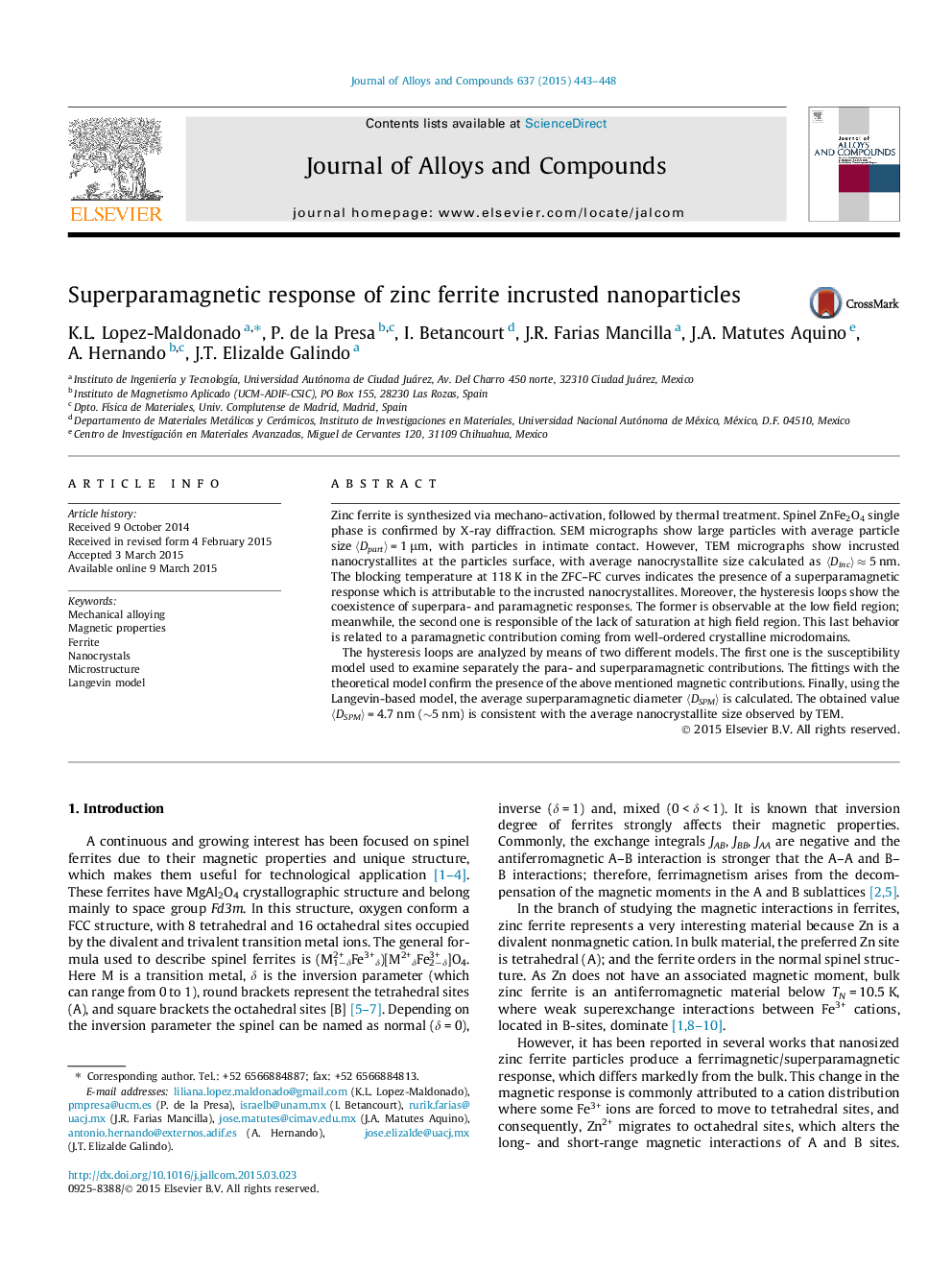| Article ID | Journal | Published Year | Pages | File Type |
|---|---|---|---|---|
| 1609520 | Journal of Alloys and Compounds | 2015 | 6 Pages |
•Incrusted nanoparticles are found at the surface of ZnFe2O4 microparticles.•Magnetic contribution of nano and microparticles are analyzed by different models.•Langevin model is used to calculate the nanoparticles-superparamagnetic diameter.•Susceptibility and Langevin analysis and calculations agree with experimental data.
Zinc ferrite is synthesized via mechano-activation, followed by thermal treatment. Spinel ZnFe2O4 single phase is confirmed by X-ray diffraction. SEM micrographs show large particles with average particle size 〈Dpart〉 = 1 μm, with particles in intimate contact. However, TEM micrographs show incrusted nanocrystallites at the particles surface, with average nanocrystallite size calculated as 〈Dinc〉 ≈ 5 nm. The blocking temperature at 118 K in the ZFC–FC curves indicates the presence of a superparamagnetic response which is attributable to the incrusted nanocrystallites. Moreover, the hysteresis loops show the coexistence of superpara- and paramagnetic responses. The former is observable at the low field region; meanwhile, the second one is responsible of the lack of saturation at high field region. This last behavior is related to a paramagnetic contribution coming from well-ordered crystalline microdomains.The hysteresis loops are analyzed by means of two different models. The first one is the susceptibility model used to examine separately the para- and superparamagnetic contributions. The fittings with the theoretical model confirm the presence of the above mentioned magnetic contributions. Finally, using the Langevin-based model, the average superparamagnetic diameter 〈DSPM〉 is calculated. The obtained value 〈DSPM〉 = 4.7 nm (∼5 nm) is consistent with the average nanocrystallite size observed by TEM.
